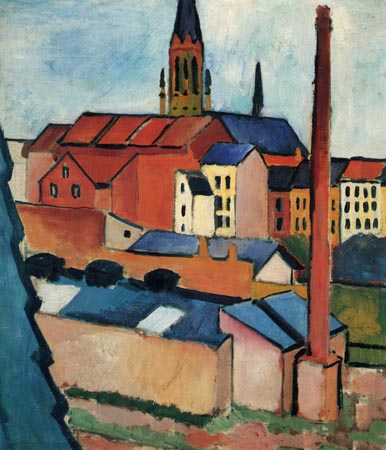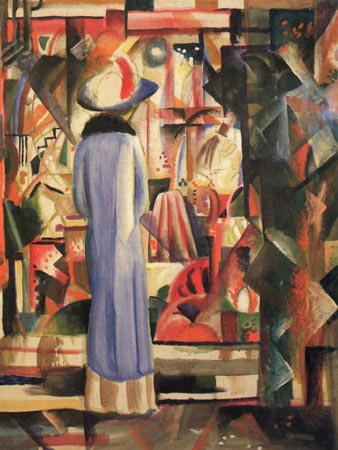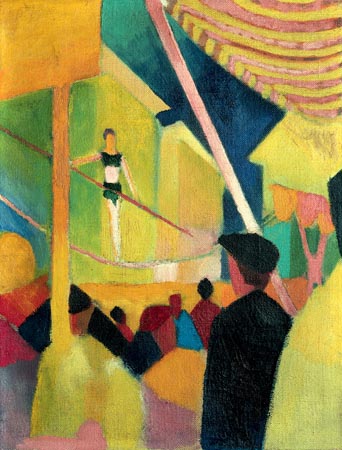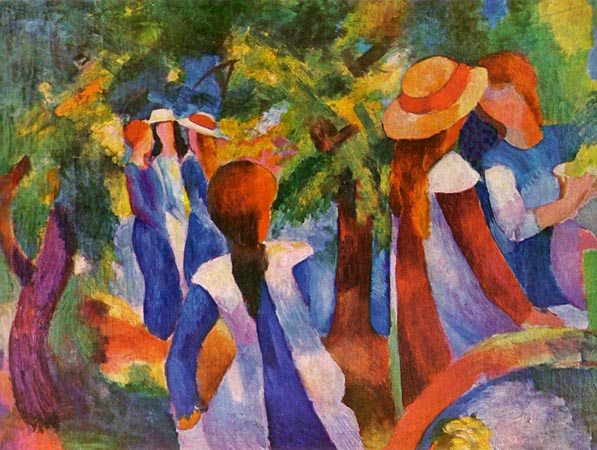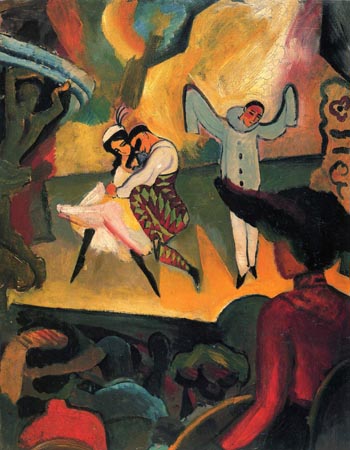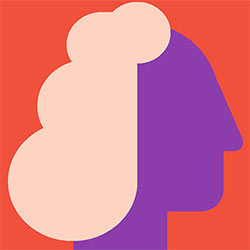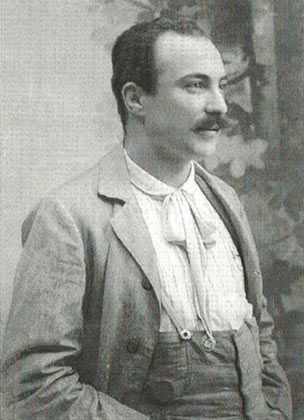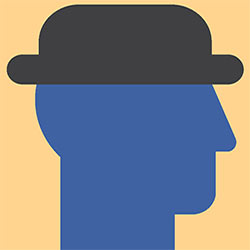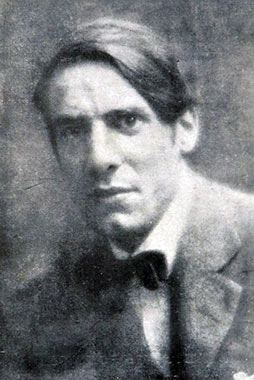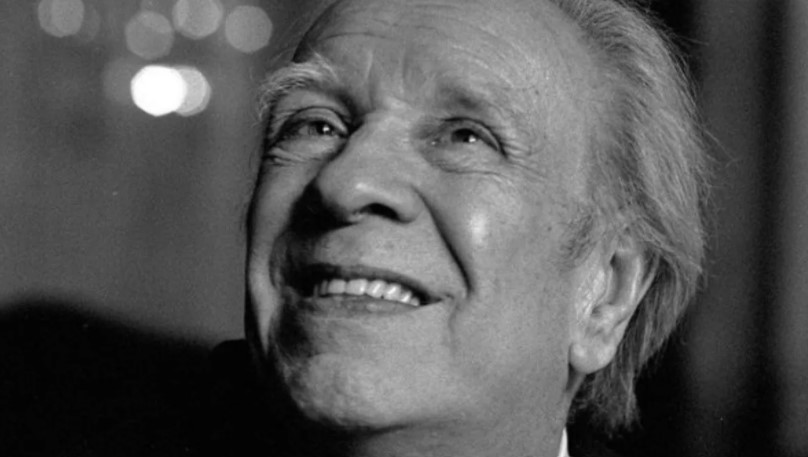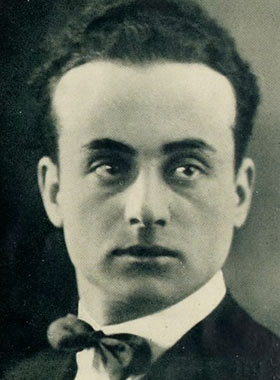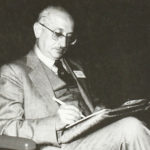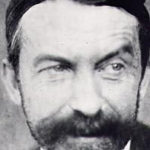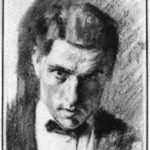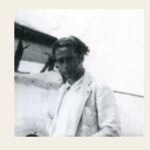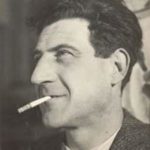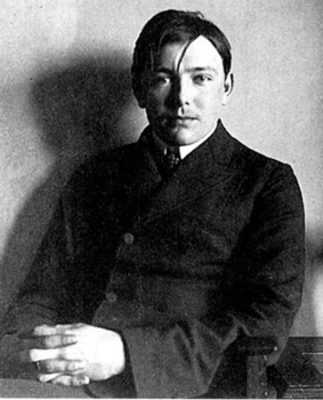
Macke August
(English)
Meschede, 1887-Perthes-les-Hurlus, 1914. August Macke was one of the leading members of the German Expressionist group Der blaue Reiter (The Blue Rider). He lived during a particularly innovative time for German art which saw the development of the main German Expressionist movements as well as the arrival of the successive avant-garde movements which were forming in the rest of Europe. Like a true artist of his time, Macke knew how to integrate into his painting the elements of the avant-garde which most interested him.
Macke lived most of his creative life in Bonn, with the exception of a few periods spent at Lake Thun in Switzerland and various trips to Paris, Italy, Holland and Tunisia. In Paris, where he travelled for the first time in 1907, Macke saw the work of the Impressionists, and shortly after he went to Berlin and spent a few months in Lovis Corinth’s studio. His style was formed within the mode of French Impressionism and Post-impressionism and later went through a Fauve period. In 1910, through his friendship with Franz Marc, Macke met Kandinsky and for a while shared the non-objective aesthetic and the mystical and symbolic interests of Der blaue Reiter.
Macke’s meeting with Robert Delaunay in Paris in 1912 was to be a sort of revelation for him. Delaunay’s chromatic Cubism, which Apollinaire had called Orphism, influenced Macke’s art from that point onwards. His Shops Windows can be considered a personal interpretation of Delaunay’s Windows, combined with the simultaneity of images found in Italian Futurism. The exotic atmosphere of Tunisia, where Macke travelled in 1914 with Paul Klee and Louis Moillet, was fundamental for the creation of the luminist approach of his final period, during which he produced a series of works now considered masterpieces.
Macke’s career was cut short by his early death at the front in World War I in September 1914.
(Spanish)
Meschede, Alemania 1887 – Perthes-lès-Hurlus (Francia) 1914, fue uno de los principales miembros del grupo expresionista alemán Der Blaue Reiter (El Jinete Azul).
Vivió durante un período especialmente innovador del arte alemán, con el desarrollo del Expresionismo y la llegada de los sucesivos movimientos de vanguardia que estaban apareciendo en el resto de Europa. Como auténtico artista de su época, Macke supo como integrar en su pintura aquellos elementos que más le interesaban de las vanguardias.
Nació en Meschede, Alemania. Su padre, August Friedrich Hermann Macke era contratista inmobiliario, y su madre, Maria Florentine, née Adolph, provenía de una familia granjera de la región de Sauerland. La familia vivió en la Brüsseler Straße hasta que August tuvo 13 años. Después de eso, vivió la mayor parte de su vida creativa en Bonn con la excepción de unos pocos períodos que pasó en el Lago de Thun (Suiza) y algunos viajes a París, Italia, Holanda y Túnez.
En París, donde llegó por primera vez en 1907, Macke toma contacto con el trabajo de los impresionistas. En 1910, a través de su amigo Franz Marc, conoce a Kandinsky y durante una época compartió la estética no-objetiva y los intereses simbólicos y místicos de Der Blaue Reiter.
El encuentro de Macke con Robert Delaunay en París en 1912, supuso una revelación para él. El Cubismo cromático de Delaunay, llamado Orfismo por Guillaume Apollinaire, influyó definitivamente en el arte de Macke a partir de ese momento. Sus Escaparates de Tiendas pueden ser considerados una interpretación personal de las Ventanas de Delaunay, combinadas con las imágens futuristas que vio en Italia.
El ambiente exótico de Túnez, que Macke visitó con Paul Klee y Louis Moilliet en 1914, fue fundamental en la aproximación a la luz de su etapa final, en la que creó una serie de trabajos que se consideran actualmente obras maestras. La carrera de Macke fue interrumpida bruscamente por su temprana muerte en septiembre de 1914, en el frente de la I Guerra Mundial.
